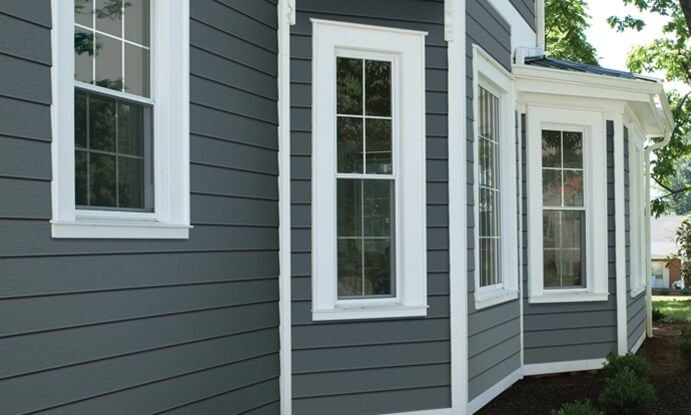A house is both an important investment and the center of family life. House siding protects the investment, makes the home more attractive, and can be made from a variety of materials including wood, brick, stucco, metal, and stone. The range of choices is great in and of itself, but it can be bewildering for homeowners trying to decide what’s right for them. To aid in the decision-making, here’s a point-by-point comparison of the two most popular options: vinyl siding and James Hardie siding, also know as HardiePlank or, to give it its technical name, fiber-cement board siding,
Appearance of Siding
With either vinyl siding or fiber-cement board siding, homeowners can make their houses virtually any color they please.
Fiber-cement board siding, however, has the advantage over vinyl siding if homeowners ever want to change the color of their homes. Just as HardiePlank’s house siding can be painted, so too can it be repainted. Vinyl siding can’t. The color homeowners choose is the color they will have to live with forever after.
Fiber-cement board siding also has an edge due to its thickness. Vinyl siding runs between .04 and .046 inches thick. HardiePlank is over .25 inches thick. That matters to appearance because thickness allows for deep embossing to make the siding look like wood. Though vinyl siding can be manufactured with a wood-like relief, its thinness precludes deep texture. Additionally, James Hardie house siding is available in stone and brick textures. Vinyl siding isn’t.
Siding Durability and Resistance to Damage
Both vinyl siding and fiber-cement board siding are fairly durable overall. Vinyl house siding typically comes with a 25-30 year warranty. A warranty for HardiePlank siding can run for 30-50 years. Neither is vulnerable to woodpeckers or insects like termites and carpenter ants.
This makes them two of the more resilient house siding choices, but of course, neither is absolutely indestructible. Vinyl siding is most often damaged when gashed or punctured. A hard impact can crack fiber-cement board siding.
The two sidings also differ with regard to their susceptibility to extreme temperature and flame. Vinyl siding can warp when exposed to extreme heat (or cold.) Because it’s treated with flame retardant, it burns slowly, but burn it does. In contrast, fiber-cement board siding has a class 1A firing rating, signifying it absolutely will not warp or catch fire, and in locales prone to wildfire, some insurance companies offer discounts to homeowners whose houses have this type of siding. Additionally, the same composition that makes it fireproof renders it impervious to the increased levels of UV radiation found at high altitudes.
Vinyl siding is water-resistant. It is not, however, waterproof. If installed improperly, moisture can seep behind it, producing mold and other problems, Similarly, fiber-cement board siding is susceptible to moisture damage, but only if not properly maintained. Unlike vinyl siding, it’s not susceptible to damage from the salty air found in coastal areas.
Maintenance
Vinyl siding is low maintenance. The homeowner can clean it simply by applying soap and water, possibly via a pressure washer. Because the color on the surface goes all he way through the material, its appearance doesn’t change if it just gets scratched.
Fiber-cement board siding requires somewhat more maintenance although homeowners still won’t be put to the trouble very often. As noted above, occasional caulking may be required to prevent damage from moisture, and repainting may be necessary to maintain color although typically only every 12-15 years.
Versatility
Because it can be textured to resemble wood, vinyl siding is a versatile house siding option. Fiber-cement board siding, however, with its ability to mimic not only wood but substances like stone and brick, is more versatile still.
Energy Efficiency
Vinyl siding has a Standard R-Value of 6.1. This gives it a slight edge over fiber-cement board siding with its Standard R-Value of 5.
Homeowners can also opt for insulated vinyl siding with an expanded layer of polystyrene foam. The insulated vinyl can increase the R-Value by 2.0-3.0, but naturally the insulation costs extra. On average, it increases the cost of the siding installation by 15%.
Eco-Friendliness
Vinyl siding is made from polyvinyl chloride, also known as PVC. The manufacture of PVC creates dioxin and other harmful substances, and the material lasts for decades and possibly centuries in landfills. Ideally, it should be recycled, but relatively few contractors go to the trouble to handle used vinyl siding in this way.
Fiber-cement board siding is made from wood pulp, water, fly ash or silica sand, and Portland cement, which is in turn manufactured from limestone, iron, and clay. As a result, this kind of house siding won’t damage the environment while resting in landfills. HardiePlank is also expected to have a long replacement cycle, which is one important aspect of sustainability.
Cost
Vinyl siding is perhaps the cheapest siding available. On average, it costs $2-$7 per square foot. That means a homeowner will typically spend $6000 to $13000 for home siding installation on a two-story house.
Because of its added benefits, fiber-cement board siding is more expensive, generally running $5 to $9 for a square foot. Thus, a homeowner is likely to pay $13000 to $22000 to install it on a two-story house.
Ease of Installation
Vinyl siding is lightweight, can be fitted directly over existing materials, and requires no special tools to install. As a result, installation is relatively easy.
Due to its thickness and composition, fiber-cement board siding is heavier than its vinyl counterpart. For this reason, installing it on a house requires at least two men as well as special equipment and tools. In addition, if the homeowner didn’t opt for a prefinished option, the Hardie board siding will need to be primed, pained, and caulked.
Thus, the installation of fiber-cement board siding is a fairly complicated and difficult process apt to daunt even dedicated do-it-yourselfers. Fortunately, they need not undertake it themselves. Should they decide that the many advantages of HardiePlank makes it the best choice for them, a licensed, bonded, and insured installation team from Stay Dry Roofing will be happy to do it for them.

